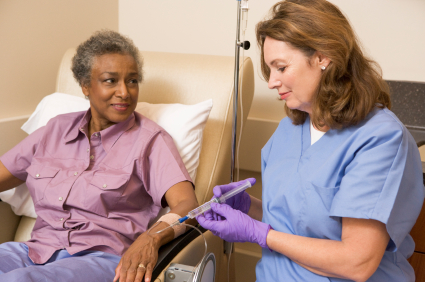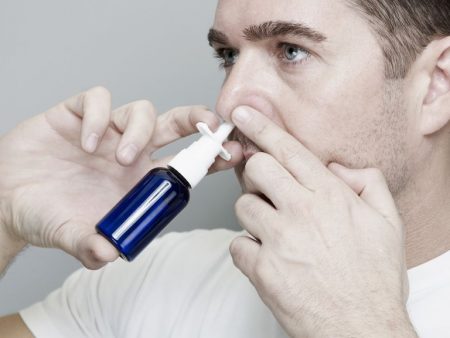Bipolar Disorder Patients Respond to Ketamine, Esketamine Treatment
(Reposted from the Yale School of Medicine blog)
A small sample of patients with bipolar disorder displayed noteworthy improvement in their depressive symptoms after being treated with the rapid-acting antidepressant intravenous ketamine and the nasal spray esketamine, according to a new Yale led-study.
The study, published October 2 in the Journal of Clinical Psychiatry, also found that patients were not at higher risk of suffering a manic episode during the acute phase of treatment.
Intramuscular versus Intravenous Ketamine for the Management of Treatment-Resistant Depression and Suicidal Ideation
Cristina Albott of the University of Minnesota Medical School reported relatively similar efficacy of intramuscular versus intravenous ketamine for the management of treatment-resistant depression and suicidal ideation in outpatient settings.
“Intramuscular (IM) delivery represents an underexplored and promising route of administration given its high bioavailability and low cost….Sixty-six patients underwent a series of 7 to 9 IV (n=35) or IM (n=31) administrations of 0.5mg/kg ketamine during a 21-28 day period. Both IV and IM showed similar magnitudes of improvement in depression, but surprisingly only the IM route was associated in a significant improvement in suicidal ideation in a within subjects change.”
“No adverse events occurred throughout the treatment series for either administration route…. This clinical case series provides preliminary support for the effectiveness and safety of IM compared to IV ketamine in TRD. “
NEW DATA ON EXTENDING THE EFFFECTS OF IV KETAMINE: Implications for countering the effects of stigma.
John Krystal of Yale U. in an article in Proceedings of the National Academy of Sci. (2023) gave new information about the anatomical and physiological effects of ketamine and about how to extend its effects. Ketamine in animals acutely (in a matter of hours) increases spines, synapses, and dendrites and physiological connectivity in neurons in the prefrontal cortex. Data now support these findings in humans with depression, but AD effects of ketamine tend to dissipate over a period of 3 to 5 days and require repeated infusions to maintain the improvement. Synaptic density can be measured with SV2A and this can be enhanced with a Navitor Pharmaceuticals drug acting on mTORC1. Surprisingly low doses of rapamycin, an inhibitor of mTOR1, extends the duration of AD effects of ketamine, increasing the response rate at 2 weeks of 13% to 41%. Ketamine restores only the spines that have been reduced in depression and rapamycin is thought to extend the duration of the restored spines. It may do this by increasing the neurotropic effects of microglia. The tripartite synapse of pre and post synaptic neurons and astrocytes, may now be better described as the tetrapartite synapse with the inclusion of microglial.
Adding psychotherapy to the effects of ketamine in PTSD increases and extends efficacy.
AD effects of ketamine can be extended with cognitive behavioral therapy. Thus, ketamine increases synaptic efficacy, synaptic density, glutamate homeostasis, and experience-dependent neuroplasticity. Extending the persistence of these effects by various chemical and psychotherapeutic mechanisms may give new ways of enhancing and prolonging the therapeutic effects of this rapidly acting agent.
Interestingly, Kaye at Yale U. reports that in contrast to transient effects of ketamine, the AD effects of therapy-assisted psilocybin appear to be very long lasting and the associated increases in spines persist for longer than 37 days. Another psychedelic MDMA that is effective in PTSD causes large increases in spines, although they are less persistent and are gone by 34 days.
Editors Note: As we have previously highlighted in the BNN, these data on ketamine and other psychedelics reversing the anatomical and physiological deficits in prefrontal neurons of depressed animals and humans (spines, dendrites, synapses and intercellular communication), give a new view of the real, reliable, and replicable neurological defects accompanying depression. The rapid correction of these neural abnormalities in conjunction with the rapid induction of antidepressant effects are not only paradigm shifting from a treatment perspective, but have major implications for the assertion that there is a neurobiological basis of depression and its treatment.
As such, these data should do much to counter the continuing stigma too often accompanying the term “mental” illness that it is somehow not as real as other medical and neurological conditions, and as it is often asserted that “it is just all in one’s head.” This picks up on the unfortunate associations and definitions of “mental” as imaginary, all in the mind, and evanescent and that mental illness can readily be countered with effort and will power such as “pulling oneself up by the bootstraps,” (the latter of which is in itself a logical impossibility.)Intravenous Arketamine As Adjunctive Treatment for Bipolar Depression
Highlights from Posters Presented at the Society of Biological Psychiatry Meeting, April 27-29, 2023 in San Diego
I.D. Bandeira of Stanford University reported on the feasibility and safety of the (R)-enantiomer of ketamine (arketamine) in treating six patients with bipolar depression: “Subjects received two intravenous infusions of arketamine of 0.5mg/kg, followed by 1mg/kg one week later.” Patients improved after the first dose and after “1mg/kg dose, the mean MADRS [Montgomery–Åsberg Depression Rating Scale] total score before the second infusion was 32.0, which dropped to 17.66 after 24h (p<0.001).” All individuals tolerated both doses, exhibiting no dissociative or manic symptoms.
Effectiveness of Repeated Ketamine Infusions for Treatment Resistant Bipolar Depression
Highlights from the International Society for Bipolar Disorders Conference Posters and Presentations, Chicago, June 22-25, 2023
Farhan Fancy, of the University of Toronto, gave 66 highly treatment resistant (unselected) bipolar I or II patients four sub-anesthetic doses of IV ketamine (0.5-0.75mg/kg) over a two-week period. They saw significant reductions in depression, anxiety, suicidality, and disability. Response rates were 35% and remission rate was 20%. “Infusions were generally well tolerated with treatment-emergent hypomania observed in only three patients (4.5%) with zero cases of mania or psychosis.”
Childhood Physical Abuse Predicts Response to IV Ketamine

At a recent scientific meeting, researcher Alan Swann reported the results of a study of intravenous ketamine in people with treatment-resistant depression. The 385 participants, who received four infusions of IV ketamine at a dosage of 0.5 mg/kg, could be grouped into three based on their type of response to the treatment.
One group had moderate depression at baseline and showed little change. A second group with severe baseline depression also showed minimal improvement. A third group who also had severe baseline depression had a rapid and robust antidepressant response to the treatment. This group had high scores relating to physical abuse on the Childhood Trauma Questionnaire (CTQ), but did not differ on other clinical variables. Swann and colleagues concluded, “Our outcomes show that IV ketamine should be considered as a primary treatment option for adults presenting with severe, treatment resistant depression and a self-reported history of childhood physical abuse. IV ketamine may not be as effective for moderately depressed individuals irrespective of childhood maltreatment.”
Ketamine May Enhance the Effects of Cognitive Training Therapy
Rebecca B. Price, a professor of Psychiatry and Psychology at the University of Pittsburgh, and colleagues reported at a recent scientific meeting that the combination of intravenous ketamine treatment and four days of cognitive training to enhance positive self-representations improved depression better than either intervention alone (IV ketamine plus a sham training or a non-medicated saline drip plus 4 days of cognitive work).
Price and colleagues suggested that priming brain plasticity with ketamine could enhance cognitive training focused on increasing positive self-representations. Psychologists have theorized that self-representations (or assessments of one’s strengths and other qualities) can be a resource that helps people cope with life stress.
Pilot Study Finds Intravenous Ketamine Improves Tough-to-Treat Adolescent Depression
A 2018 open study by Kathryn R. Cullen and colleagues in the Journal of Child and Adolescent Psychopharmacology suggests that intravenous ketamine may improve depression in adolescents who have not responded to at least two antidepressants.
Thirteen patients ranging in age from 12 to 18 with treatment-resistant depression were given six ketamine infusions over a period of two weeks, at doses of 0.5 mg/kg of body weight. A 50% drop in scores on the Children’s Depression Rating Scale-Revised (CDRS-R) was considered a good response, and the average drop in participants’ scores was 42.5%. Five of the thirteen participants (38%) met the criteria for a good response. Three of these participants were still in remission at six weeks, while the other two relapsed within two weeks.
Ketamine was fairly well-tolerated by the young participants. Some had temporary dissociative symptoms or blood pressure changes. Higher absolute doses of ketamine were linked to better response.
The response rates in this group were not as good as in some studies of adults. More research using larger sample sizes and placebo controls is needed to optimize dosing and clarify the safety and efficacy of intravenous ketamine in adolescents with tough-to-treat depression, but this is a promising finding in a small number of adolescents.
Single Dose of Ketamine Reduces Suicidal Ideation
A systematic review and meta-analysis by Samuel T. Wilkinson and colleagues in the American Journal of Psychiatry analyzed individual patient data from 10 studies in which a single intravenous dose of ketamine was given to patients with suicidal ideation. The review included data from a total of 167 participants.
Wilkinson and colleagues found that ketamine reduced suicidal ideation within 24 hours, and these effects lasted for up to seven days. Mood also improved, but the reduction in suicidal ideation was independent of the degree of improvement in depression.
Among the participants, 54.9% were free of suicidal ideation at 24 hours after the infusion, 60.0% were free of suicidal ideation one week after the infusion, and 61.1% were free of suicidal ideation at two weeks.
Editor’s Note: The authors report that there is much to clarify about ketamine treatment before it can be used clinically to treat patients at risk for suicide. However, ketamine’s powerful and rapid effects offer an interesting alternative to other slow-acting treatment options, and could be an ideal acute treatment for patients arriving in an emergency room because of high suicide risk. A ketamine injection could be especially useful for those who are not admitted to the hospital, as it could produce anti-suicidal effects that could help carry a patient over until their next psychiatric appointment.
Mixed Findings for Intranasal Ketamine
The drug ketamine can rapidly and temporarily improve depression when delivered intravenously. Researchers have been working on extending ketamine’s effects and finding easier ways of delivering the medication. One new delivery method under investigation is nasal spray, which could be used repeatedly to extend ketamine’s effects.
Unfortunately, researcher Colleen Loo reported in the Journal of Psychopharmacology in 2018 that a pilot study of self-administered intranasal ketamine for severe depression was suspended when 5 of the 10 participants had side effects that included high blood pressure, psychotic symptoms, and motor incoordination that made them unable to keep using the spray. Early in the four-week study, dosage was adjusted to leave more time between sprays, but this was not enough to prevent the problems with side effects.
Loo said that the nasal spray version of ketamine has complications including variations in absorption among different people and on different days, depending on factors like mucus in the nose and exact application techniques. Its rapid absorption into the bloodstream could lead to high peak levels in certain people.
Loo and colleagues had previously found that elderly patients receiving injections of ketamine under the skin required highly individualized dosing to avoid side effects. This may also be the case with nasal spray.
While Loo’s study found intranasal ketamine infeasible for the moment, Janssen Research and Development, a pharmaceutical company owned by Johnson & Johnson, reported positive results in phase 3 clinical trials of intranasal esketamine (a component of ketamine) at the annual meeting of the American Psychiatric Association in May. Researchers for Janssen reported that intranasal esketamine was highly effective for depression and well-tolerated both in acute treatment and over a year-long period. Janssen is now pursing approval for the drug from the US Food and Drug Administration.




